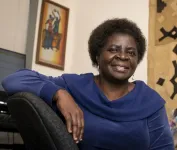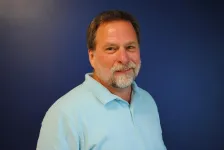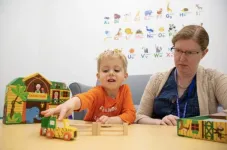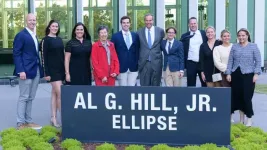(Press-News.org) The beauty service microbusiness industry in the United States — such as the small, independently-owned nail salons found across the country — is huge, with more than $62 billion in annual sales.
However, most of the workers who provide these highly sought services are Asian female immigrants who earn very low wages. These workers face numerous workplace health challenges stemming from the chemicals they use, repetitive movements with handheld tools and awkward body posturing.
They also are reluctant to bring attention to these conditions due to factors such as possible immigration-related trauma, lack of English proficiency, fear of losing their jobs and unfamiliarity with American culture and business practices.
A new commentary led by Dr. Aurora Le, associate professor with the Texas A&M University School of Public Health, offers multi-layered insight into the complex challenges these beauty service workers face, as well as suggestions for interventions and policy measures to address them.
For this assessment, which was funded through the National Institute for Occupational Safety and Health, Le and a colleague from the University of Minnesota used a research framework that depicts how behavior, the physical/built environment, sociocultural environment, and health care system interact with factors at the individual, interpersonal, community and society level to influence the health of individuals and populations.
“This structure not only helps us understand how these multilayered issues affect each other, but also helps us shape and prioritize strategies to address health issues and disparities through organizations, communities and policies,” Le said.
For example, where the behavioral domain intersects with the interpersonal level of influence for Asian and Asian American beauty service workers, the researchers identified a lack of occupational health services and training, of employment-related benefits and low wages, and of other workplace health promotion benefits.
“This means that outreach and education at the individual level about occupational safety and health would require cultural competency and communication that includes materials not only in their language, but also at their literacy level,” Le said. “The same would be true at the interpersonal level, which includes social interactions in the home and work environment, as well as larger social networks.”
At the community level, the resources available for these workers vary significantly by geographic location, with cities that have more immigrants from a particular country having more in-language resources.
“Still, it’s the case that most of these resources pertain to services such as how to enroll in and access health care, how to get legal help, and so on,” Le said. “Materials about occupational safety and health are extremely limited, especially for microbusinesses.”
Within the larger society level, which includes state-specific licensure and health department regulations, many beauty service microbusiness owners may lack a thorough understanding of the regulations and so might not be in compliance.
“It’s also the case that most of these businesses have fewer than 10 employees and thus are subject to fewer regulations, but also operate under razor-thin profit margins and struggle to survive,” Le said. “In addition, immigrant employees with little job security are much less likely to report unsafe practices.”
Making Change
How can these findings inform future occupational safety and health policies and practices?
“For one thing, it’s clear that little could be accomplished at the individual level for these beauty service workers,” Le said. “Instead, change will require collaboration by stakeholders who are invested in the community’s health and experts in areas such as business development who understand the context in which these workers operate. That means that training at the very minimum must be available in the workers’ preferred language, and that these employers need to gain buy-in on the importance of workplace health and safety.”
At the community level, Le said community-based organizations for Asians and Asian Americans were at the forefront for these workers during the COVID-19 years, and now offer more resources on occupational safety and health issues. One example is the Vietnamese American nonprofit Boat People SOS, which has added programming on chemical exposures for nail salon workers to its training.
At the larger society/policy level, the federal government has provided funding to some community-based organizations for safety outreach efforts to Asian and Asian American beauty service microbusinesses. Le said this has led some states to adopt safer practices and advocate for workplace standards for nail salons, including better wages and training and paid time off.
Finally, at the level of the occupational safety and health practitioner and researcher, Le said the best approach would be community-based participatory research, in which all parties have equal input and decision making and build on existing assets to empower participants to have greater control over their lives. Le said that bringing more Asians and Asian Americans into the field of occupational safety and health as researchers at universities and government agencies also would help greatly, as would increased collaboration between scientists, other subject matter experts and policy makers.
“These workers and employers have come to this country and made new lives for themselves,” Le said. “And now, a new, multi-level focus on occupational safety and health could help them thrive.”
By Ann Kellett, Texas A&M University School of Public Health
###
END
Nail salon and other small beauty service workers face significant daily health challenges
2023-10-19
ELSE PRESS RELEASES FROM THIS DATE:
Pandemic prevention consortium announces new leadership team
2023-10-19
Recognizing the many milestones it has reached in recent months, Strategies to Prevent Spillover, or STOP Spillover, a project funded by the U.S. Agency for International Development (USAID) and led by Tufts University, has announced that the interim leadership team that was put in place in March 2023 will take on a permanent role for the next two years of the project.
Hellen Amuguni, an associate professor in the Department of Infectious Disease and Global Health at Cummings School of Veterinary Medicine, is the new project director. The co-deputy directors are Felicia Nutter, director of the International Veterinary ...
mRNA delivered by extracellular vesicles induces immunotherapy response in glioblastoma
2023-10-19
HOUSTON ― A team of researchers at The University of Texas MD Anderson Cancer Center has developed a new method for using extracellular vesicles to enhance responses to immunotherapy in glioblastoma, potentially opening the door for wider use of engineered messenger RNA (mRNA) for cancer therapy. The study was published today in Nature Communications.
Earlier this year, a team of researchers led by Betty Kim, M.D., Ph.D., and Wen Jiang, M.D., Ph.D.,developed a novel method for loading mRNA into extracellular vesicles, small structures created by cells to transport biomolecules and nucleic acids within ...
Point-of-care technology initiative awarded $8.9 million renewal
2023-10-19
UMass Chan and UMass Lowell’s point-of-care technology initiative awarded $8.9 million renewal
UMass Chan Medical School and UMass Lowell have received an $8.9 million award from the National Institutes of Health (NIH) for renewed support of their initiative to advance the development of home-based and point-of-care health technologies. The program aims to jumpstart new tools to address heart, lung, blood and sleep disorders, especially in underserved populations.
The Center for Advancing Point of Care Technologies ...
GLS2 shapes ferroptosis in hepatocellular carcinoma
2023-10-19
“[...] we hope that our findings will inform future decisions regarding treatment of liver disease.”
BUFFALO, NY- October 19, 2023 – A new editorial paper was published in Oncotarget's Volume 14 on October 19, 2023, entitled, “GLS2 shapes ferroptosis in hepatocellular carcinoma.”
In their new editorial, researchers Sawako Suzuki, Divya Venkatesh, Tomoaki Tanaka, and Carol Prives from Columbia University discuss ferroptosis regulation of GLS2 as a potential therapeutic strategy against liver diseases.
“More than a decade has passed since our group (1) as well as ...
Groundbreaking study on bilingual children with Developmental Language Disorder
2023-10-19
Amanda Owen Van Horne sits on the floor while a child mixes up cake batter in a play kitchen.
While at play, an intensive language therapy program is also underway for preschool-aged children with developmental language disorder (DLD) at the University of Delaware’s Treatment Efficacy and Learning Language (TELL) Lab. The child says, “Him cooking.” Owen Van Horne repeats back, “He is cooking.”
DLD is a problem with learning and using language not attributed to a hearing impairment or intellectual disability, according to DLD ...
The Trinity Family Foundation grants major gift to Center for BrainHealth to honor the memory of Al G. Hill, Jr.
2023-10-19
The Trinity Family Foundation has pledged a generous $4 million gift to the Center for BrainHealth to advance the science of brain health, in memory of Al G. Hill, Jr., a renowned Dallas entrepreneur and philanthropist.
The thoughtful investment will support burgeoning research at the Center for BrainHealth, focused on deepening our understanding of neuroplasticity – the brain’s lifelong ability to change, adapt, get stronger and work better.
In recognition and gratitude, the center’s ...
Research shows new documentation tool could help optimize seizure treatments in patients with epilepsy
2023-10-19
New research from the University of Colorado Anschutz Medical Campus studies a new tool that will help medical providers identify patients who are failing epilepsy treatments earlier in order to change treatment to rapidly optimize positive outcomes.
The study was published online today in Neurology® Clinical Practice, an official journal of the American Academy of Neurology.
The study was a quality improvement project that tested the implementation of an easy-to-use standardized electronic health record documentation tool, which dramatically improved the accuracy and completeness of important clinical documentation ...
Neuroscientists to reveal new insights into Alzheimer’s
2023-10-19
Dementia experts from UC San Francisco will join their peers from around the globe at the annual Clinical Trials on Alzheimer’s Disease (CTAD) conference in Boston from Oct. 24 to 27.
Presentations cover breakthroughs in therapies that clear amyloid – a hallmark of Alzheimer’s – and a symposium on patients with early Alzheimer’s symptoms who were treated with the anti-amyloid medication donanemab, which may be approved by the end of the year. Other topics include novel treatments, diagnostic blood biomarkers, amyloid-related imaging abnormalities (ARIA) and Medicare coverage.
This year’s ...
New study finds racial and ethnic disparities persist in access to chiropractic care and physical rehabilitation for adults with low back pain
2023-10-19
BOSTON - Low back pain is the leading cause of disability worldwide and a major driver of healthcare costs in the United States, according to the World Health Organization. Over the last 20 years, recommended treatment of low back pain has shifted from use of pain medications including opioids to early use of nonpharmacologic treatments such as spinal manipulation and therapeutic exercise which are commonly provided by chiropractors and physical therapists. However, while nearly all Americans will experience back pain at some point in their lives, most Americans ...
Record-breaking fast radio burst offers path to weigh the Universe
2023-10-19
In a paper published today in Science, a global team led by Macquarie University’s Dr Stuart Ryder and Swinburne University of Technology’s Associate Professor Ryan Shannon, report on their discovery of the most ancient and distant fast radio burst located to date, about eight billion years old.
The discovery smashes the team’s previous record by 50 per cent. It confirms that fast radio bursts (FRBs) can be used to measure the “missing” matter between galaxies.
The source of the burst was shown to be a group of two or three galaxies that are ...






